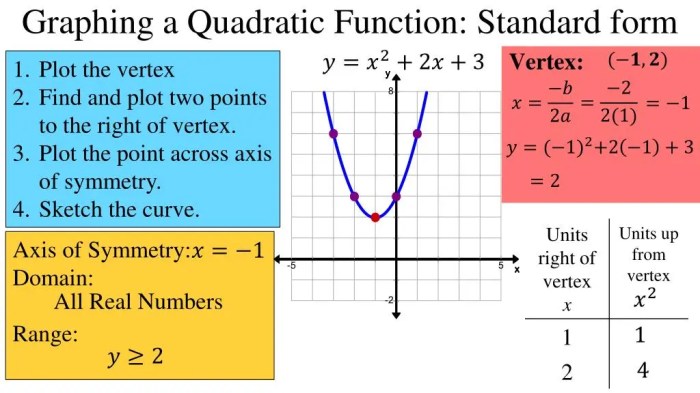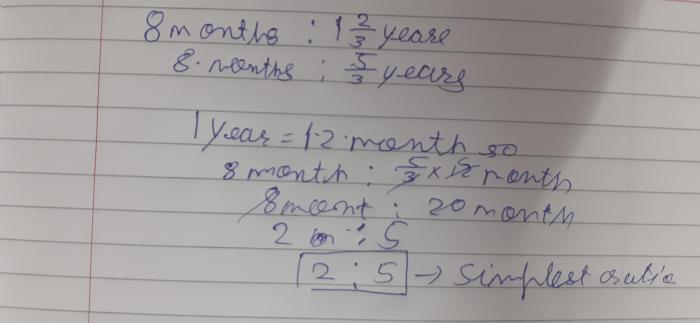Unit 6 Quadratic Functions Answer Key: Unlocking the Secrets of Quadratic Equations introduces students to the fascinating world of quadratic functions, providing a comprehensive guide to their properties, applications, and more. This answer key offers a thorough exploration of quadratic equations, empowering learners to master this fundamental mathematical concept.
Delving into the intricacies of quadratic functions, this answer key unravels their definition, standard form, and key features, including vertex, axis of symmetry, and intercepts. It meticulously explains methods for solving quadratic equations, such as factoring, completing the square, and the quadratic formula, ensuring a deep understanding of their roots and the discriminant’s significance.
Quadratic Functions: Definition and Properties: Unit 6 Quadratic Functions Answer Key
Quadratic functions are polynomial functions of degree 2. They are defined by the general equation y= ax2+ bx+ c, where a, b, and care real numbers and a≠ 0.
The standard form of a quadratic function is y= a( x– h) 2+ k, where ( h, k) is the vertex of the parabola.
Key features of a quadratic function include:
- Vertex: The point ( h, k) where the parabola changes direction.
- Axis of symmetry: The vertical line x= hthat divides the parabola into two symmetrical halves.
- Intercepts: The points where the parabola intersects the x– and y-axes.
Solving Quadratic Equations
There are several methods for solving quadratic equations:
- Factoring: Factoring the quadratic expression into two linear factors and setting each factor equal to zero.
- Completing the square: Adding and subtracting the square of half the coefficient of xto both sides of the equation to create a perfect square trinomial.
- Quadratic formula: Using the formula x= (- b± √( b2– 4 ac)) / 2 ato find the roots of the equation.
The discriminant, D= b2– 4 ac, determines the nature of the roots:
- D> 0: Two distinct real roots.
- D= 0: One real root (double root).
- D< 0: No real roots (complex roots).
Graphing Quadratic Functions, Unit 6 quadratic functions answer key
To graph a quadratic function, find the vertex and intercepts and plot them on the coordinate plane.
The vertex is the point ( h, k) where the parabola changes direction. The x-intercepts are the points where the parabola intersects the x-axis, and the y-intercept is the point where the parabola intersects the y-axis.
Quadratic functions can be transformed by translations, reflections, and stretches. For example:
- Translation: Moving the parabola horizontally or vertically by adding or subtracting a constant from xor y.
- Reflection: Flipping the parabola over the x– or y-axis by changing the sign of xor y.
- Stretch: Changing the width or height of the parabola by multiplying xor yby a constant.
Applications of Quadratic Functions
Quadratic functions are used to model a wide variety of real-world phenomena, including:
- Projectile motion: The trajectory of an object thrown into the air is a parabola.
- Area of a circle: The area of a circle is a quadratic function of the radius.
- Profit maximization: The profit of a company is often a quadratic function of the number of units sold.
Advanced Topics in Quadratic Functions
Advanced topics in quadratic functions include:
- Complex roots: Solving quadratic equations with complex roots using the quadratic formula.
- Relationship to conic sections: Quadratic functions are related to conic sections, such as parabolas, ellipses, and hyperbolas.
- Advanced applications: Using quadratic functions to solve problems in fields such as physics, engineering, and finance.
Top FAQs
What is the standard form of a quadratic function?
The standard form of a quadratic function is ax^2 + bx + c, where a, b, and c are real numbers and a is not equal to 0.
How do you find the vertex of a quadratic function?
To find the vertex of a quadratic function, use the formula (-b/2a, f(-b/2a)).
What is the discriminant of a quadratic equation?
The discriminant of a quadratic equation is b^2 – 4ac. It determines the number and type of roots of the equation.

